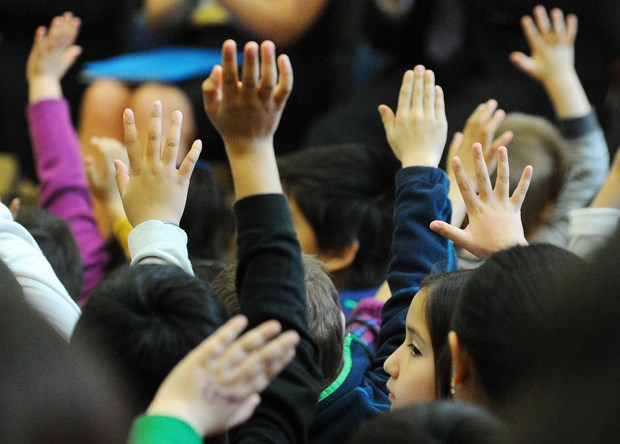Teachers on the North Shore are hoping a recent Supreme Court of Canada legal win will mean more help in the classroom for students with special needs and smaller class sizes.
“Everybody will be picking over the entrails of what that actually means,” said Rob Millard, president of the West Vancouver Teachers Association, in the wake of a recent decision in the teachers’ favour from the top court in the country.
But he said for most teachers – and parents – class composition is the most important issue. “It can be make or break,” he said.
“I’ve never had a teacher break down in tears of frustration over class size alone,” he said. “(Class composition) has gotten worse year by year.”
Millard said that’s the issue that most parents relate to as well because they see what it means in their own children’s classrooms.
It took the Supreme Court justices only about half an hour to rule in favour of the teachers union Nov. 10, bringing to an end a 14-year legal battle. The Supreme Court ruled the B.C. government infringed on teachers’ constitutional rights when in 2002 it unilaterally ripped up contracts that set limits on class sizes and the number of special needs students who could be placed in each classroom.
“It was an amazing victory,” said Martin Stuible, president of the North Vancouver Teachers Union, about the court ruling. “It taught us ‘Never give up.’” Stuible said now he’s hoping to see more resources put into classrooms sooner than later.
Before 2002, there could be no more than three students with special needs in each classroom before school districts were required to add extra help, such as the presence of an education assistant. For the past decade, there have been no limits.
According to statistics from the Ministry of Education, in North Vancouver last year there were 336 classes with more than four special needs students in them. Of those, 183 classes had seven or more special needs students. A total of 246 classes had four or more English Language Learner students, including 61 classes with seven or more ELL students. There were also 141 classes with more than 30 students.
Ministry data shows 127 more classes with four or more special needs students than in 2007/2008 and 79 more classes with four or more ELL students than in 2007/2008. Data going back to 2002 was not immediately available from the province.
Stuible said the increase in the number of classes with multiple students with complex needs has meant huge challenges for teachers.
In West Vancouver last year, there were 121 classes with four or more special needs students, according to ministry data, including 18 classes with seven or more. There were 185 classes with four or more ELL students, including 83 classes with seven or more. That’s 20 more classes with four or more special needs students and 43 more classes with four or more ELL students than in 2007/2008.
Both Millard and Stuible said changing class sizes in the middle of a school year would be complicated, but hiring more supports – like assistants and teacher specialists – to help classroom teachers could be done relatively quickly.
Chris Kennedy, superintendent for the West Vancouver School District, said the first step will be for the B.C. Teachers Federation and the provincial government to sit down and start negotiating class size and composition.
That will be more complicated than just applying the 2002 formulas to today’s classrooms, he said, because the way that special needs students are defined has changed in the past decade, as have some of the ways that classes are taught. Kennedy said he anticipates that some of the changes won’t be put in place until next September, although hiring of extra help in classes that have many students with complex needs could start more immediately, through the province’s learning improvement fund.



